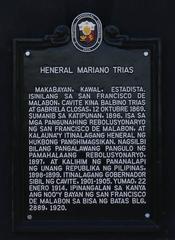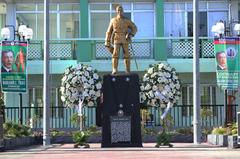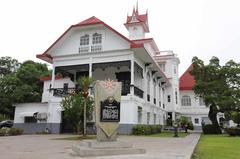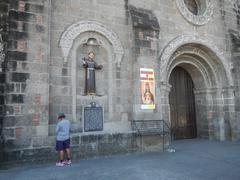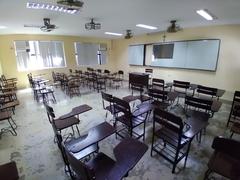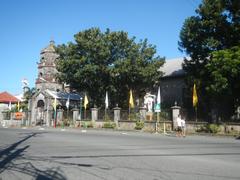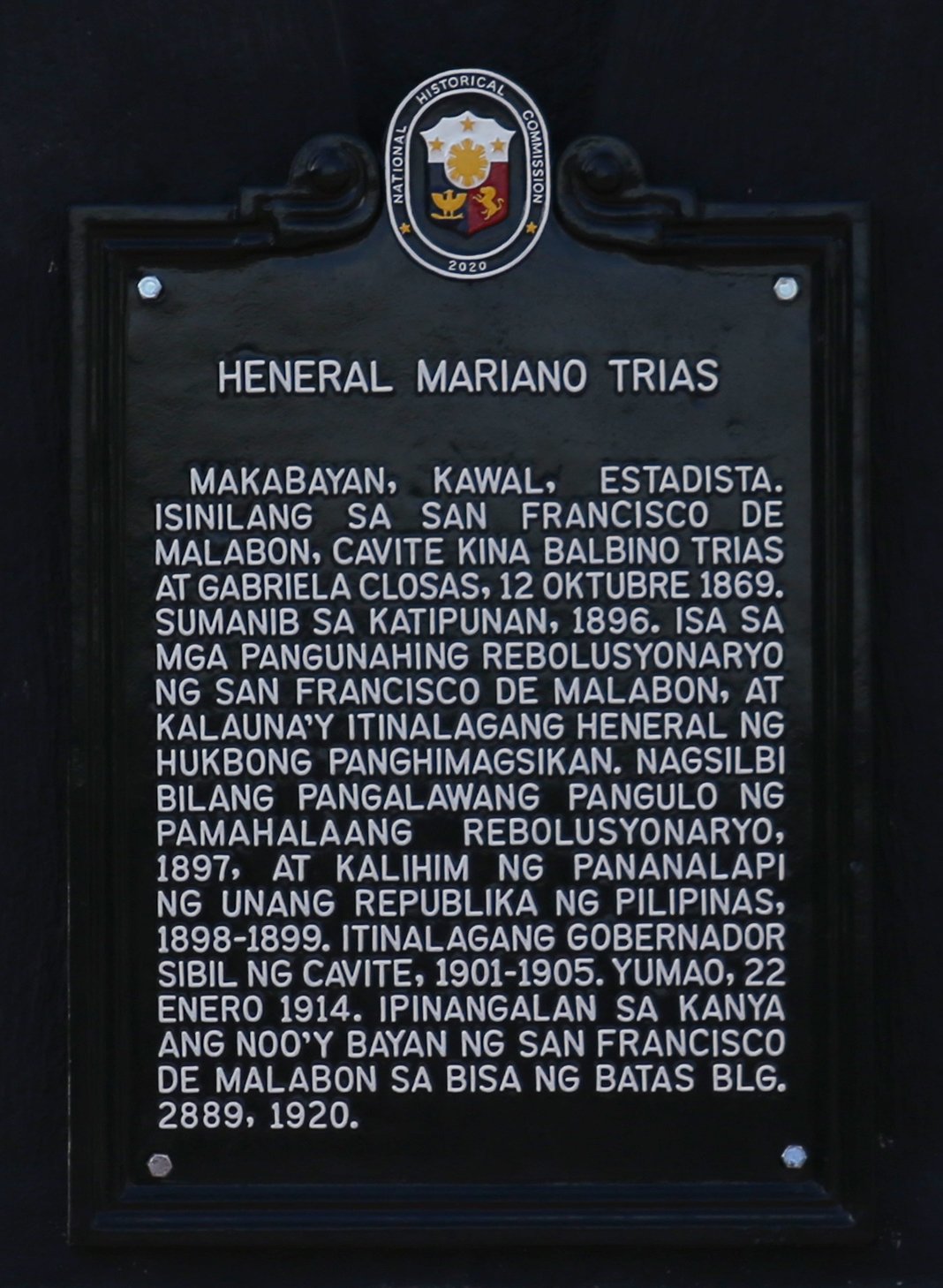
General Mariano Trias Historical Marker: Visiting Hours, Tickets, and Guide to General Trias Historical Sites
Date: 14/06/2025
Introduction
Nestled in the heart of General Trias City, Cavite, the General Mariano Trias Historical Marker pays homage to one of the Philippines’ earliest and most significant revolutionary leaders. Erected to honor General Mariano Trias—recognized as the first de facto Vice President of the Philippine revolutionary government—the marker is a symbol of the city’s rich heritage and the enduring influence of Cavite in the country’s struggle for independence. This landmark not only celebrates a heroic past but also functions as a hub for education, local identity, and cultural tourism, inviting visitors of all backgrounds to engage with Philippine history (Everything Explained; Scribd; Manila Times; Wikipedia; Philstar).
This guide covers the historical background, significance, visitor information, travel tips, and local experiences to help you get the most from your visit to the General Mariano Trias Historical Marker and other heritage sites in General Trias.
Table of Contents
- Origins of General Mariano Trias and the City’s Renaming
- Mariano Trias: Revolutionary Leader and Statesman
- The First Cry of Cavite and Its Revolutionary Significance
- General Mariano Trias Historical Marker: Visitor Information
- Mariano Trias’s Later Life and Civic Contributions
- The Marker’s Role in Local Identity and Education
- Cultural Traditions and Community Engagement
- Authentic Local Experiences
- FAQ: Visiting the General Mariano Trias Historical Marker
- Conclusion
- References
Origins of General Mariano Trias and the City’s Renaming
General Trias was originally known as San Francisco de Malabon. In 1920, the town was renamed to honor General Mariano Closas Trias, a revolutionary leader born in Cavite. This renaming not only commemorated his legacy but also signified the city’s lasting connection to the Philippine Revolution. The tribute followed the transfer of Trias’s remains from Manila to his hometown, solidifying his place in local and national history (Scribd; Everything Explained).
Mariano Trias: Revolutionary Leader and Statesman
Mariano Trias y Closas (October 12, 1869 – January 22, 1914) was a leading figure in the Philippine Revolution against Spanish colonialism. At the Tejeros Convention in 1897, Trias was elected as the first de facto Vice President of the revolutionary government, serving under Emilio Aguinaldo. He later assumed critical roles as Secretary of Finance and Secretary of War (now Defense), orchestrating military campaigns in Cavite and Laguna and leading guerrilla operations in Southern Luzon (Wikipedia).
Trias’s leadership was instrumental in unifying revolutionary factions and guiding strategic efforts during the nation’s quest for independence.
The First Cry of Cavite and Its Revolutionary Significance
The “First Cry of Cavite” in 1896, which erupted in San Francisco de Malabon (now General Trias), marked the onset of the revolution in Cavite and fueled the broader national uprising. Trias’s leadership helped solidify unity among revolutionaries and inspired strategic action during this pivotal chapter (Scribd).
General Mariano Trias Historical Marker: Visitor Information
Unveiled on February 24, 2020, by the National Historical Commission of the Philippines (NHCP) in partnership with the local government, the marker commemorates both the centennial of the city’s renaming and Trias’s enduring legacy (Manila Times). Its prominent city-center location ensures accessibility for residents and tourists.
Visiting Hours and Admission
- Hours: Open daily from 8:00 AM to 6:00 PM.
- Admission: Free of charge; no tickets or reservations required.
Accessibility and Facilities
The marker is set in a landscaped public plaza with paved walkways, benches, and shaded areas, making it suitable for visitors with mobility needs. The plaza is also a safe and well-patrolled area, especially during events.
Guided Tours and Educational Programs
Guided tours can be arranged through the General Trias Tourism Office, especially during commemorative events or by prior coordination. Schools and community groups frequently organize educational visits, particularly on Independence Day and the city’s foundation day.
Nearby Cavite Historical Sites
Enhance your visit by exploring these notable heritage destinations:
- Aguinaldo Shrine: The ancestral home of Emilio Aguinaldo, first Philippine president.
- Imus Cathedral: A historical church tied to the revolution.
- Tejeros Convention Site: Where the revolutionary government was formed.
- St. Francis of Assisi Parish Church: One of Cavite’s oldest churches.
- Corregidor Island: Accessible by boat, a key site in Philippine military history.
Travel Tips and Getting There
- From Metro Manila: Take a bus or van bound for Cavite, alighting at General Trias, then use local tricycles to reach the marker.
- By Car: Via CAVITEX or Governor’s Drive; use navigation apps for optimal routes.
- Public Transport: Jeepneys and UV Express connect General Trias with neighboring towns; tricycles are common for shorter distances.
Best to visit early morning or late afternoon for comfortable weather and the best natural light for photography.
Mariano Trias’s Later Life and Civic Contributions
After the revolution, Trias continued his public service, organizing the Nacionalista Party chapter in Cavite and representing the country at the Louisiana Purchase Exposition in 1904. He also served as Cavite’s first provincial governor during the American colonial period and remained influential until his death in 1914 (Wikipedia; Everything Explained).
The Marker’s Role in Local Identity and Education
The marker is more than just a commemorative plaque. It serves as a beacon of local pride and a focal point for heritage education, featuring prominently in city celebrations and school programs. Its unveiling in 2020 was a centennial milestone for General Trias, reinforcing the city’s dedication to honoring its revolutionary roots (Philstar).
Cultural Traditions and Community Engagement
General Trias actively preserves its historical legacy through community events and educational campaigns. The annual foundation day (February 24), Independence Day (June 12), and the marker’s anniversary are celebrated with parades, wreath-laying, and cultural performances. The publication of “Gen. Trias: The Story of General Mariano C. Trias, First Vice President of the Philippine Republic” in 2019 also helped to deepen public understanding of his contributions (The Free Library).
Oral histories and local narratives, shared by residents and elders, enrich the visitor experience, offering personal perspectives on the city’s evolution from “Malabong” (bamboo-filled) to a modern urban hub (Philstar).
Authentic Local Experiences
Heritage and Culinary Tours:
Explore the marker and nearby heritage sites, and sample local delicacies such as Pancit Malabon and kakanin (rice cakes). Visit during cultural festivities for an immersive experience.
Arts and Crafts:
Support local artisans by purchasing woodcrafts, bamboo products, and memorabilia depicting General Trias and historical landmarks.
Community Engagement:
Participate in public gatherings, workshops, and guided walks to connect with the city’s vibrant culture.
FAQ: Visiting the General Mariano Trias Historical Marker
Q: What are the visiting hours?
A: Daily, 8:00 AM to 6:00 PM.
Q: Is there an entrance fee?
A: No, admission is free.
Q: Are guided tours available?
A: Yes, during commemorative events or by arrangement with the tourism office.
Q: How do I get there from Manila?
A: Take a bus or van to General Trias, then a tricycle to the marker; those driving can use CAVITEX or Governor’s Drive.
Q: Where else can I visit nearby?
A: Aguinaldo Shrine, Imus Cathedral, Tejeros Convention Site, and St. Francis of Assisi Parish Church.
Conclusion
The General Mariano Trias Historical Marker stands as a gateway to Philippine history, local pride, and cultural identity. With free admission, accessible facilities, and a central location in a historically rich city, it offers a rewarding experience for history enthusiasts and casual travelers alike. Plan your visit during key celebrations, explore nearby heritage destinations, and immerse yourself in the enduring legacy of General Mariano Trias.
For more information, download the Audiala app for guided tours and up-to-date travel tips. Connect with the local tourism office or visit the NHCP website for the latest updates.
References
- History of General Trias, 2020, Scribd
- Mariano Trias, Everything Explained
- Mariano Trias, Wikipedia
- NHCP Unveils Gen. Trias Historical Marker, 2020, Manila Times
- NHCP Unveils Gen. Trias Marker, 2020, Philstar
- The Free Library: General Trias – More than just a city name
